Test on four samples: Blank with BF, RYW with BF, ADY with BF, and RYW with AP. All samples are 20g flour at 100% hydration. No weight taken on ADY but picture shown. Will take pH at the end of fermentation for each.
Calibration check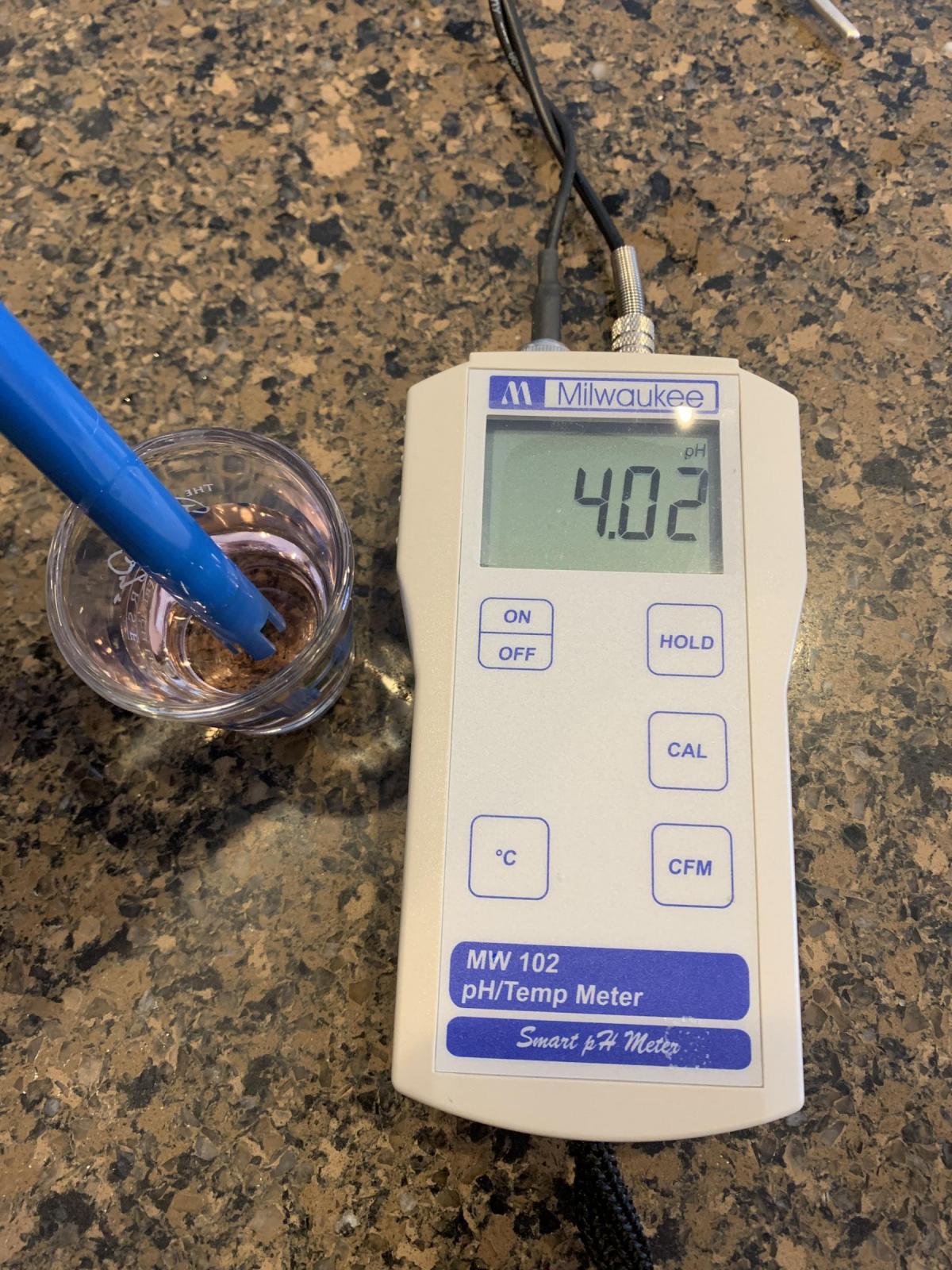
RYW taken out of refrigerator and kept at 75 deg F for 18 hours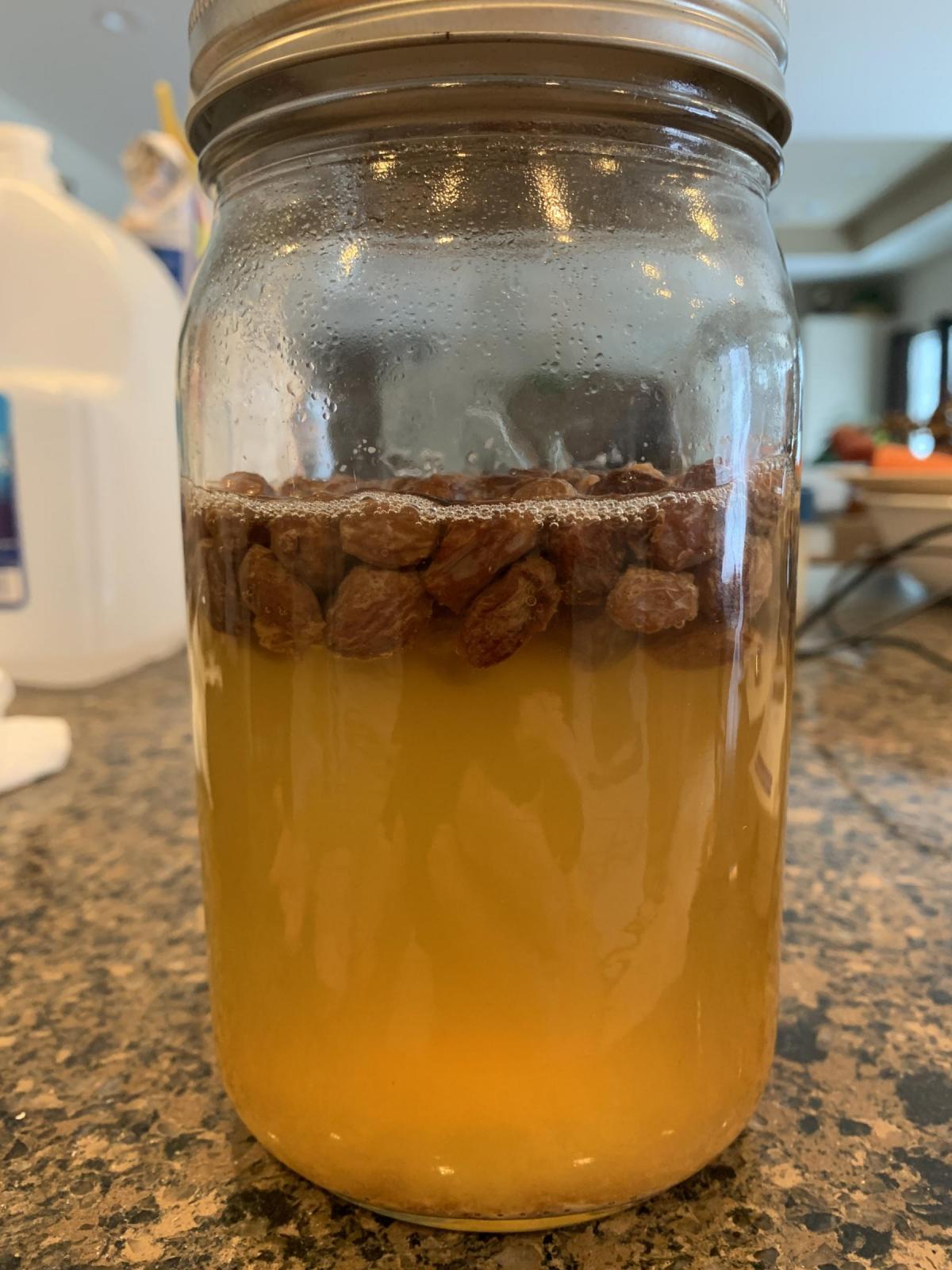
pH of spring water used in Blank and ADY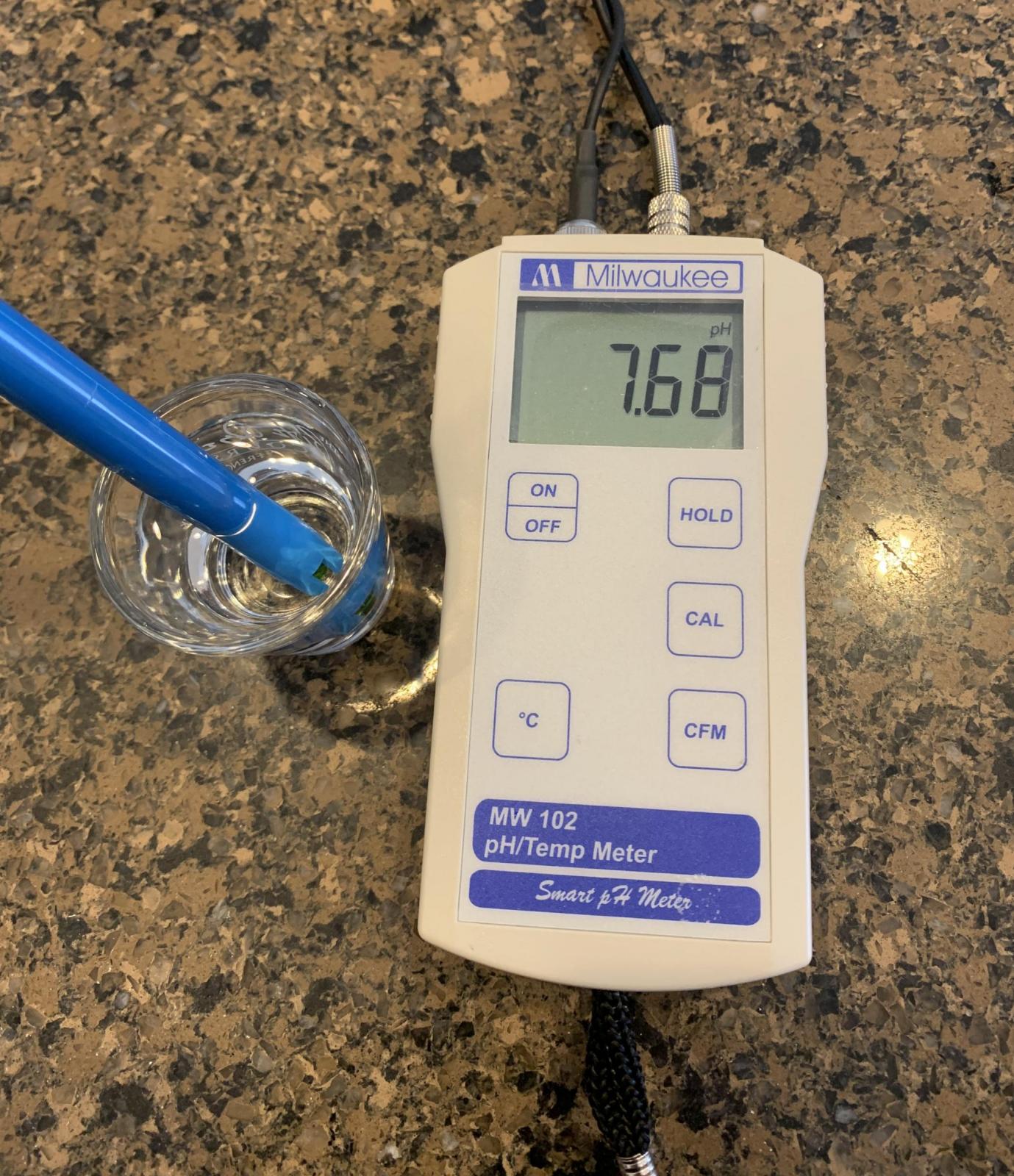
pH of RYW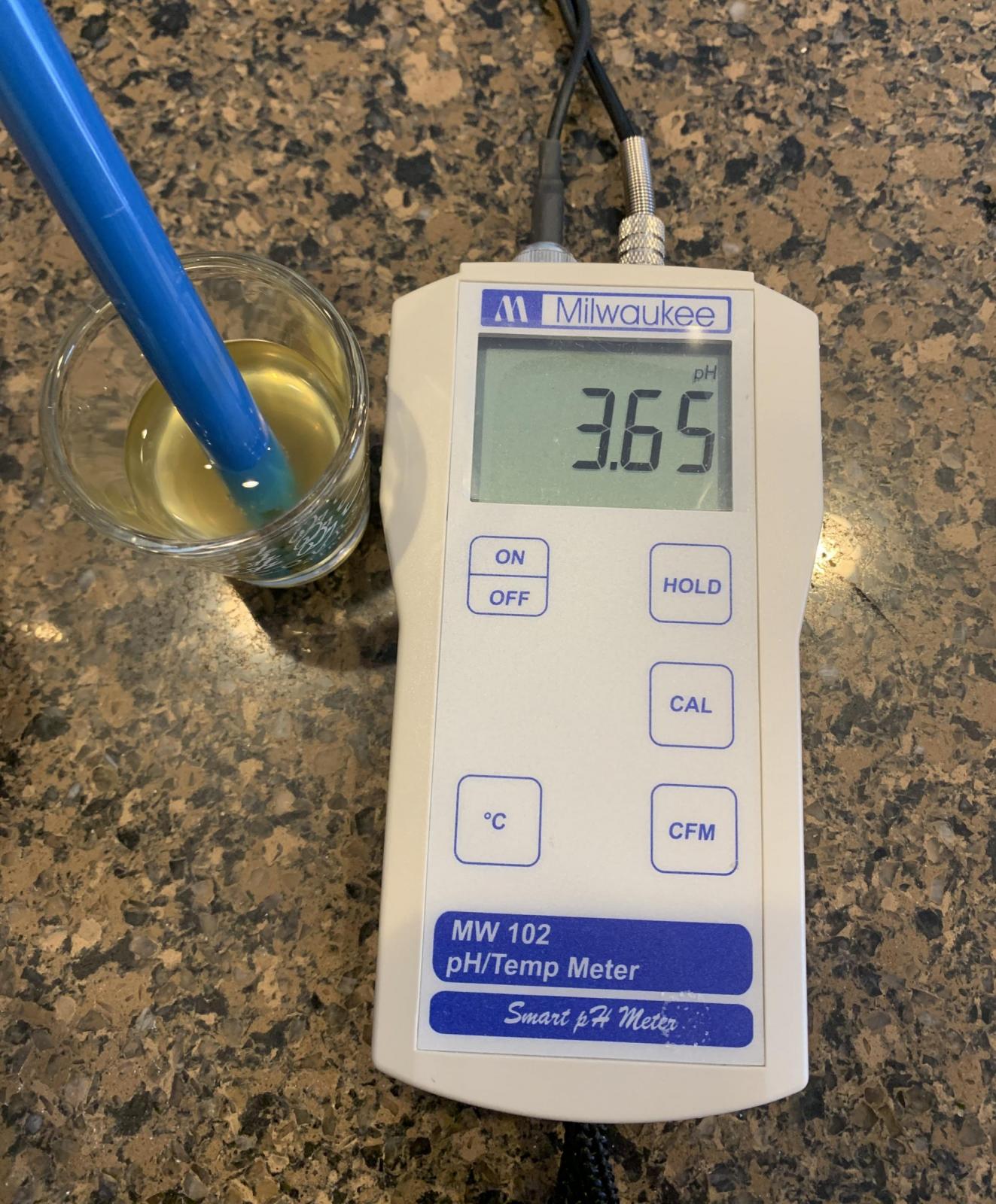
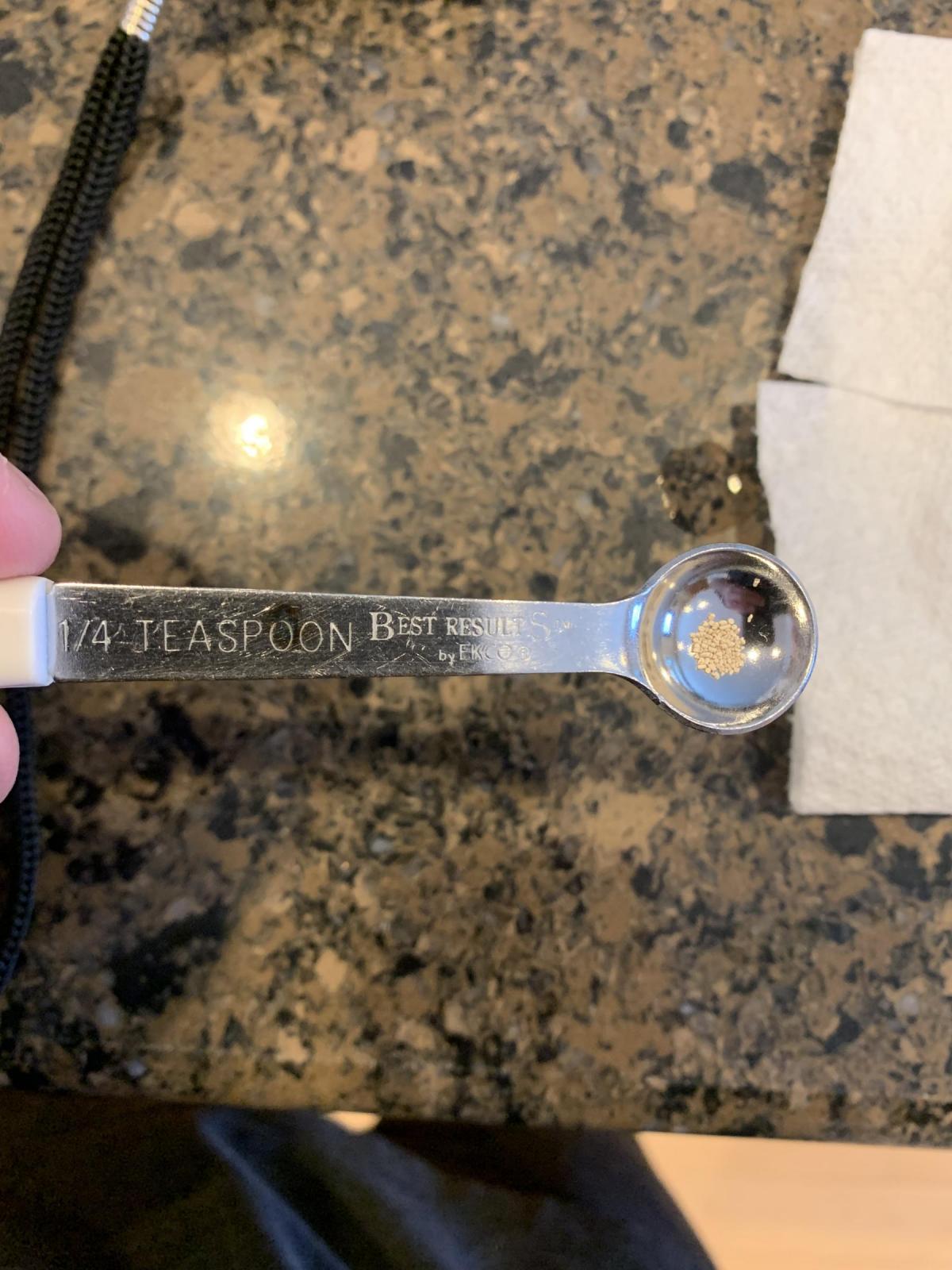
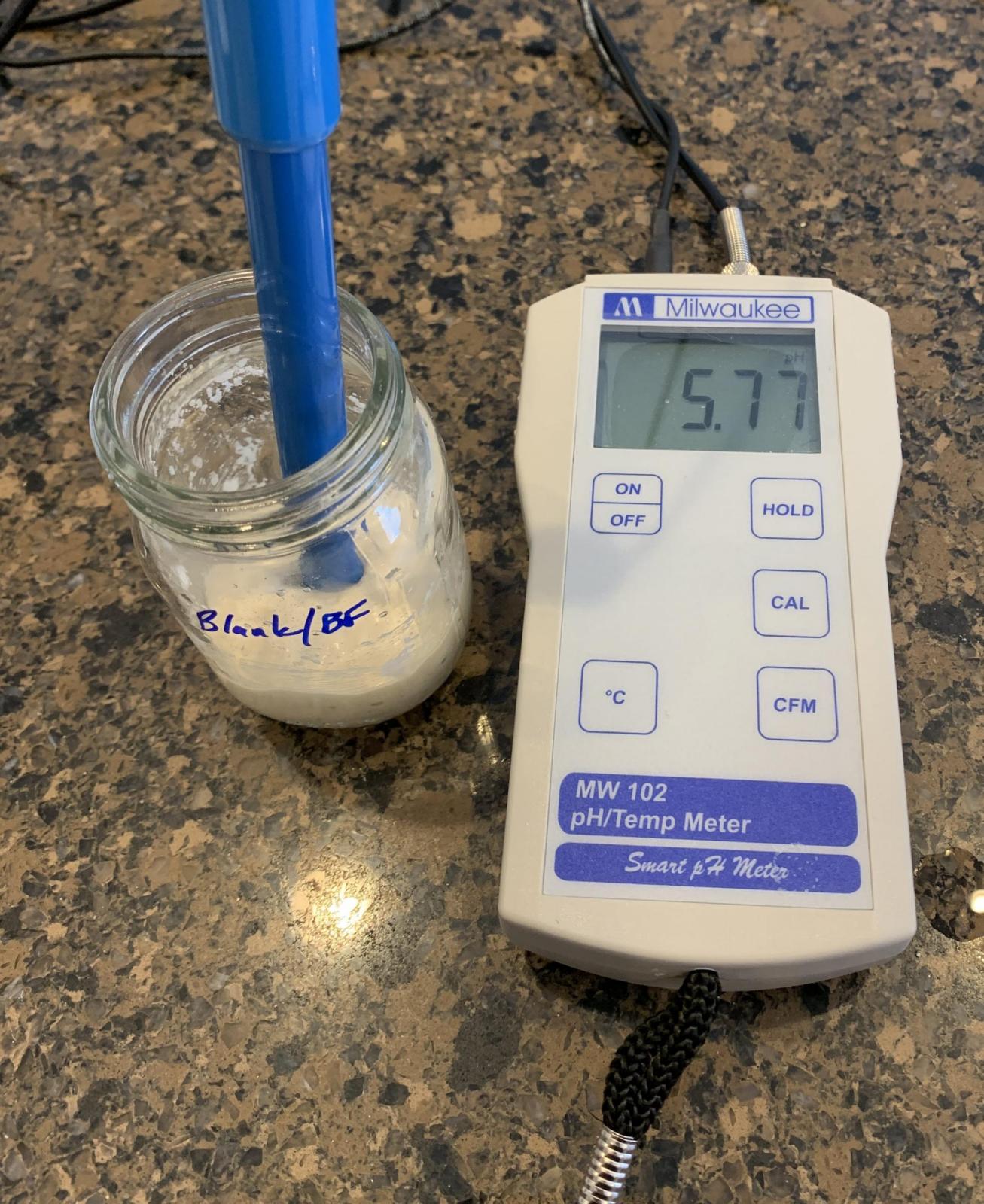
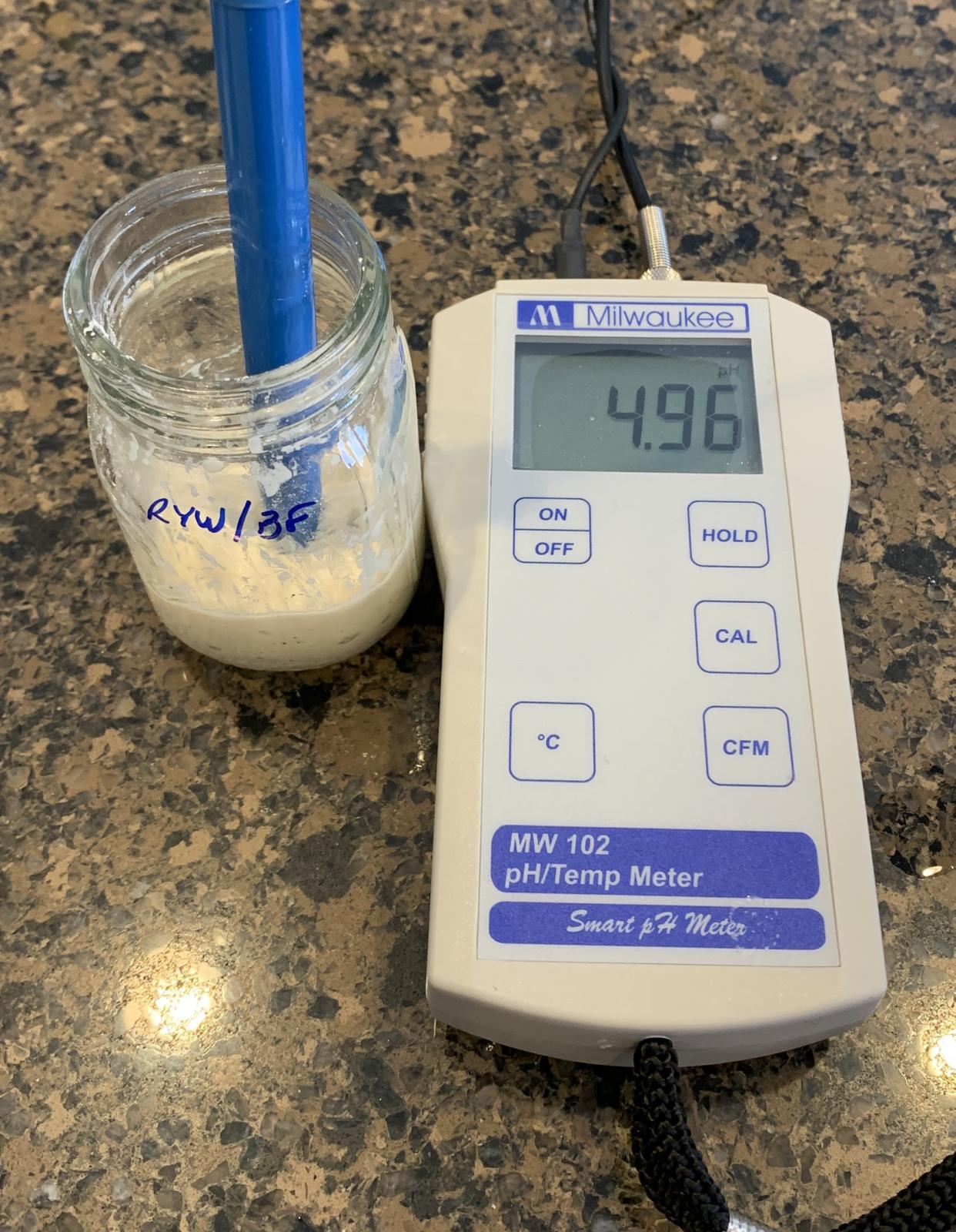
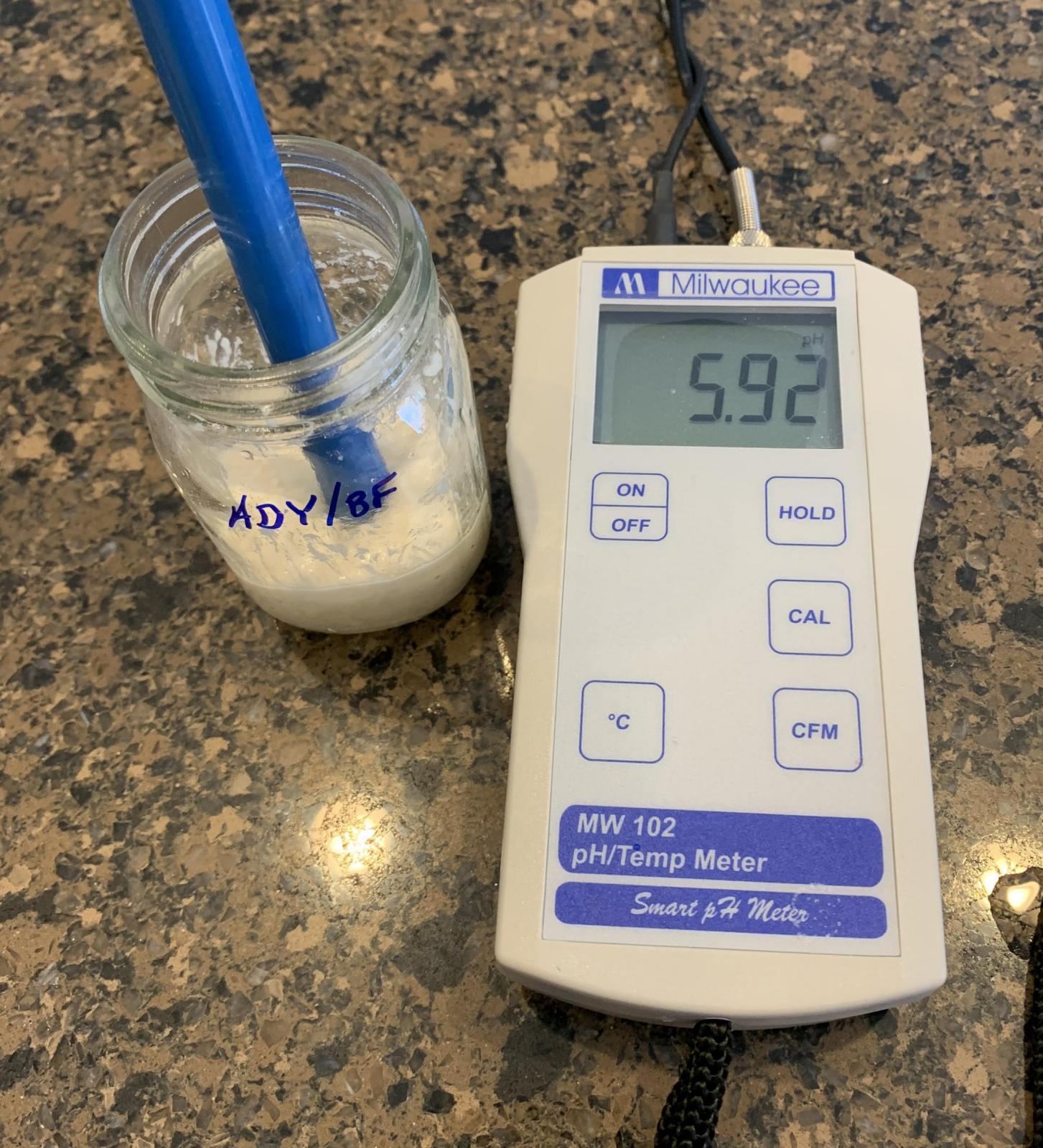
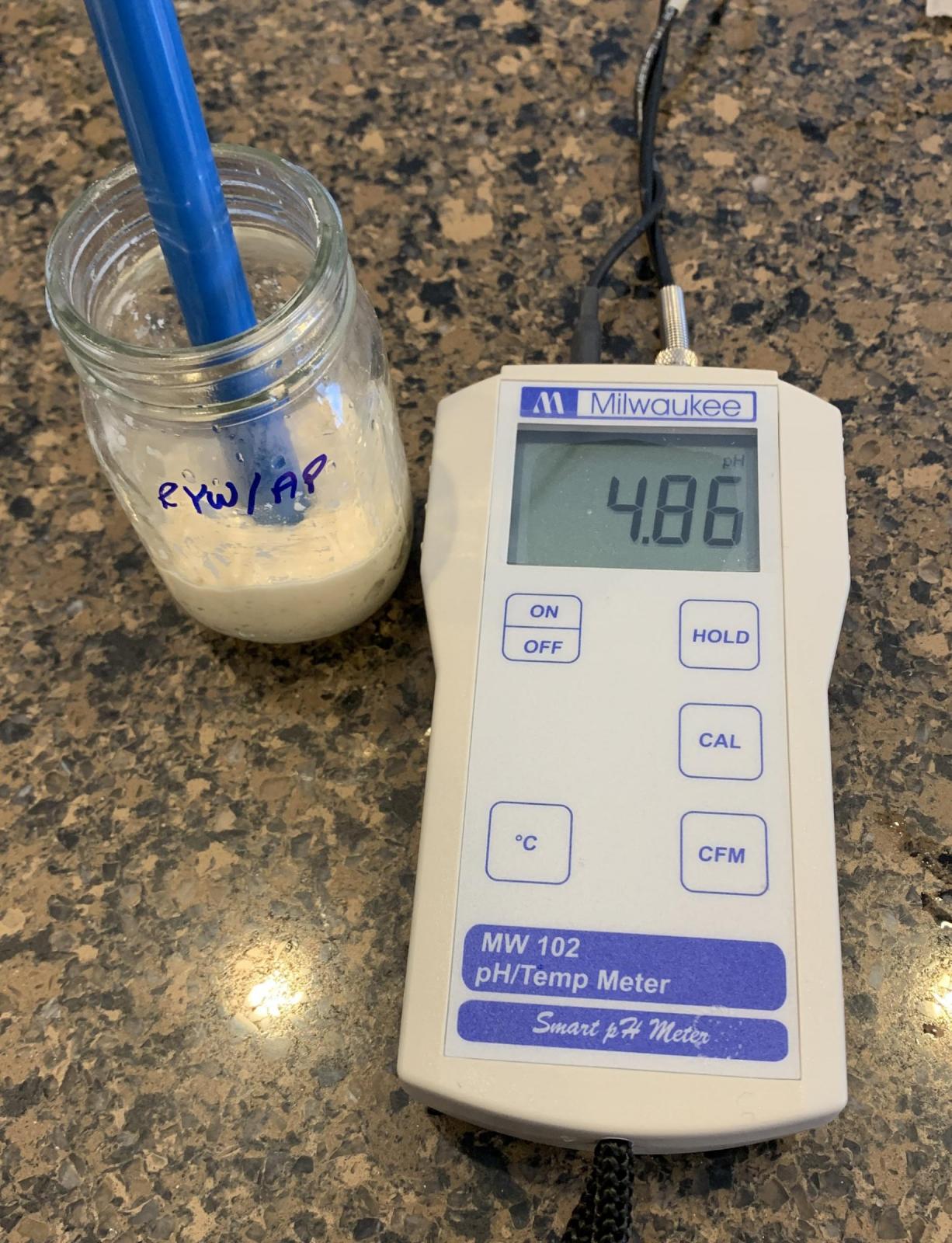
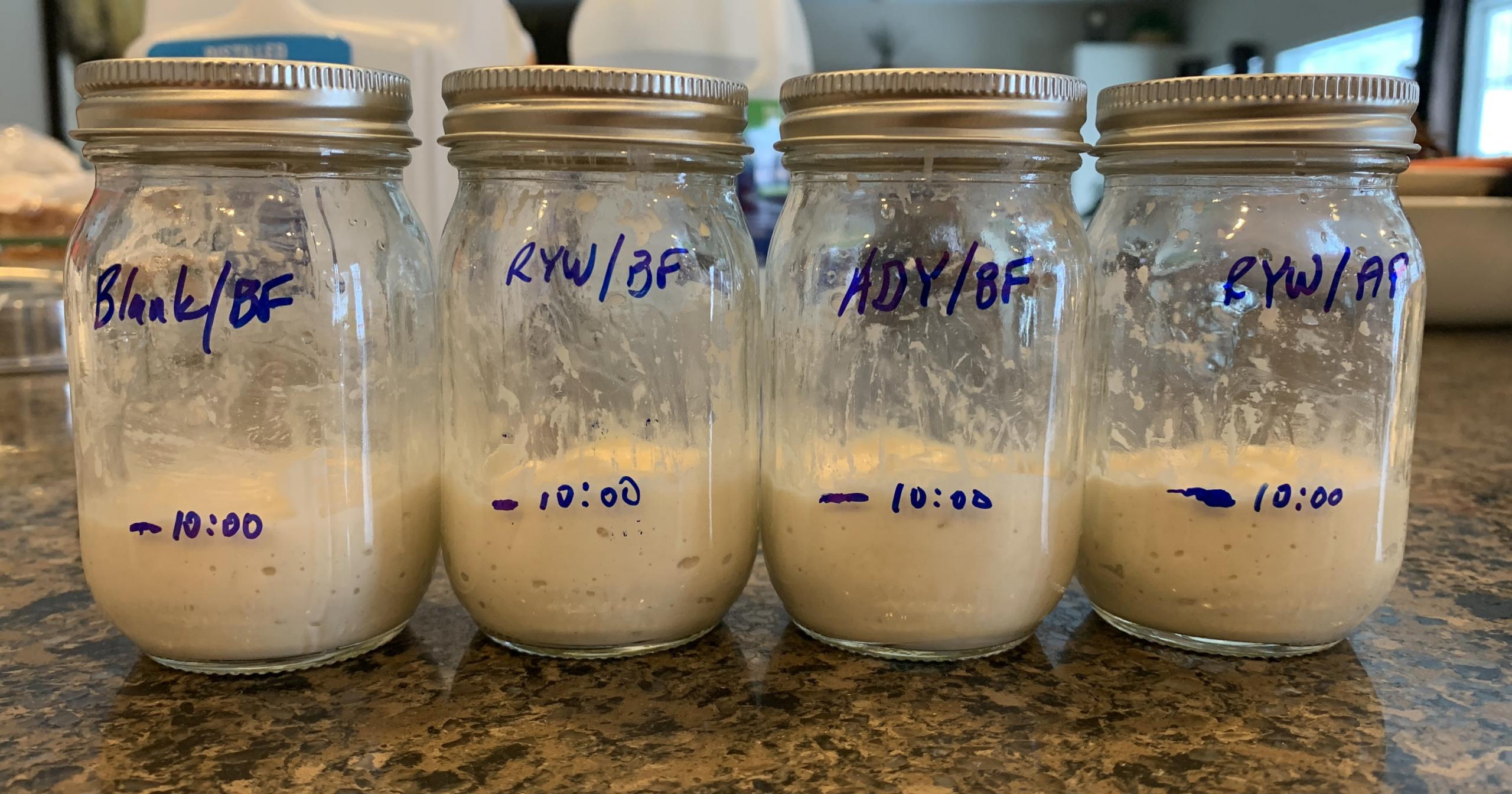
I read this with great interest. What is the pH of raisins in water before significant fermentation has occurred? Is most of the acidity from the fruit? My guess is that it is.
Benny, I don’t remember where I read it (I think a wine/beer making site), but from what I remember, the pH of a grape/raisin water before fermentation is below 4.
Interesting that RYW starts so low, I've always assumed my Apple yeast water was more acidic (from my flour failure episode)
Hope we are getting a conclusion to this story. Need to know what happens next in the story, after some fermentation has happened?
5 hours in Jon and not seeing much action yet. A few bubbles, but no real rise yet. Will post an update tonight about 10:00 (12 hours of fermentation).
Troy, I remember learning during the Swiss Farmhouse (Yeast Water) Community Bake that the initial YW Levain build was very slow to ferment. But the second build fermented extremely fast. My latest test proved that out.
Ilya, Michael told me that a YW has low TTA. When it is mixed with flour the pH rises a great deal. The low TTA in the YW may explain a lot to me.
Thanks Dan. Had a similar low fermentation rate today, but I plan to use both RYW samples in a bake on Tuesday. They're in the refrigerator now. Hoping they make it till Tuesday, and I'll see if the 2nd build goes much faster.
Yeast water pH 3.65? Wow! How long since it's been refreshed? Does it smell/taste alcoholic and/or vinegary? I am wondering whether you are creating vinegar in there... Whether there are LABs or AABs there.
I suspect freshly made or recently refreshed YW won't be so acidic. Acid from raisins themselves will be diluted a lot, pH should be much higher than 4, and I don't think yeast can lower the pH so much. But once there is significant amount of ethanol, acetic acid bacteria might take hold and start producing acetic acid. Basically, making vinegar is exactly the same process as yeast water (fruit (or dry fruit) left in water), just takes longer.
Thinking more about it, the fact that YW is acidic is not as surprising as I thought... Since there is no flour there, there is little to no buffering capacity in the solution, so even weak acid production can lower the pH pretty quickly. I guess the test is really meaningful only after we get a measurement after fermentation, whether the pH drops more in YW preferment than in IDY preferment.
Here's the pH readings after 12 hours. The ADY sample had started to recede just a bit. It peaked at about 11 hours.
The RYW levains did not rise as much as the ADY sample but they had higher pH drops. I think that suggests bacterial activity.
Blank: 0.25 pH units increase
ADY/BF: 0.29 pH units decrease
RYW/BF: 0.52 pH units decrease
RYW/AP: 0.54 pH units decrease
It makes sense to me that the raisin yeast water samples might have a bit of LAB growing in them, just not as much as a standard sourdough culture would since the pH is kept so low in the raisin yeast water each time it is refreshed the LAB population never has much chance to replicate but is there from the start in some quantity. Once the pH increases by building a levain, the LAB start to replicate. I’m guessing that a second build will have a greater drop in pH as the LAB are greater in the first build and then have a chance to replicate even more in the second build.
Benny
Benny, Michael tells me that YW have very low acid concentrations (TTA). Seems like an important consideration along with pH. I know I haven’t been considering TTA concerning this. Without high TTA there should be little to no sour flavor.
Observation -
Looking at Troy’s first build test, the alveoli in the YW are nicer. Bet the second build will produce much nicer cell structure. It seems YW is a strong Dough Conditioner.
Since there is no buffering in YW, low pH would correspond to low TTA. I think Benny is right, YW has a low LAB population to start with due to pH, and bring in much less actual acid than a SD starter - however they start multiplying once flour starts to buffer the acidity. I guess compared to SD the acid load still ends up lower in YW (since the breads are not sour to taste), but clearly much more acidic than pure yeast.
Also kind of interesting what acid they would be producing in there... Since production of acetic acid requires oxygen and hence it's inhibited in very liquid media, it would primarily be lactic acid. Unless AABs take hold have enough time to work from the surface and start making vinegar, perhaps?
It is reasonable to believe that the same microbes (LAB & yeast) cover both wheat berries and grapes (2 examples). Can it be that the acid(s) on the outside of grapes (fruit) prevent the growth and reproduction of LAB on the surface of the fruit, while things like wheat berries that are non-acidic allow free growth and reproduction in the field?
Do wheat berries come loaded with LAB and fruit are lacking LAB microbes because of acid(s) on their surface?
inquiring minds want to learn…
Possible, but I don't know whether it's true. There certainly are some LABs on fruit too, but perhaps much less in relative terms? Maybe there are some measurements out there.
Great question... Maybe they're both present, but the lower pH in the YW causes natural selection and the yeast become dominant because the LAB's can't survive in the low pH environment. Too many questions and unknowns... :-)
Ilya, I was a little surprised this time. The last time I did this, there was noticeable vinegar aromas and I saw a drop of one full pH unit. I did notice a hint of sour with this one, but not a lot. One difference though is this only went for 12 hours versus 15 hours the previous time. The vinegar may have gotten stronger if I would have let it go.
Benny, Do you know... Does the <4 pH just cause LAB's to go dormant, or does it actually kill them off? The reason I ask... I did not get a starting YW pH when I did this the last time. However, before this test, I did have the YW sitting out for another 18 hours at 75 deg F. Because this YW is so new, I'm just wondering if everything is till coming into balance and the LAB's are disappearing now that the pH is down where it's supposed to be. Unfortunately, that's a lot of What If's and speculation. :-)
What I understand is that they stop replicating at pH 3.8 and lower. They do not die, if they did then our starters sitting in the fridge for extended periods when revived would take some time to repopulate when fed again. And in fact, after being in the fridge for weeks feeding our starters they show evidence of repopulating and producing acids as the refreshed starter starts fermenting with the pH falling once again.
Even though the LAB can’t reproduce much below pH4, they still continue to metabolize and in that process create acids. This is why a super over-matured starter gets so sour and acidic. It’s not only the relative population of LAB, but the quantity (TTA) of acids they produce.
Low pH with a high concentration of acids = sour taste.
…and apparently our starters won’t go below pH of 3.5. I guess at that pH they stop metabolizing.
From my understanding, I don’t think so. This is based on my common sense only. *No Scientists here*
Without testing TTA you could monitor the starter until it reached 3.5pH, then taste it and record your observations.
After this allow the starter to ferment another 24hr, then taste. It will be taste quite a bit more sour.
If this is incorrect, help me to understand my error.
I don’t recall where I read this or whether or not this is true Dan, so I could be wrong. But I do remember reading that our starters will only get to a pH of 3.5 and not go lower.
Lots of interesting information here. In the introduction, it looks like they inhibit their own growth around 3.5.
https://www.ncbi.nlm.nih.gov/books/NBK234703/
But even though the LAB don’t reproduce and maybe not grow below 3.5pH, don’t the LAB microbes continue to metabolize as long as there is available food and in that process of metabolizing - create acids?
I think we emphasize pH because most of us are not equipped to measure TTA. And even if equipped, Doc tells me it is quite a task to measure. BUT, what really matters to us as bakers is the flavor. I think flavor is most impacted by the quantity of acids, even more so than the pH of them.
Is this thinking correct?
Danny, all things must come to an end. There will be a finite limit of pH and TTA, and LAB will die off if they are unable to grow...
See hear for an example: https://www.thefreshloaf.com/comment/472787#comment-472787
Also, acid is no measure of flavour. Rather, flavour includes acidity but purely in that dimension. Flavour occurs mostly in the nose!
The type and mix of acids that occur in these fermentations gives rise to why we can draw a line on the pH.
As for food availability, amylotic activity also shuts down at a low pH (think rye).
You all are on the right track more or less. And lots of what is being discussed has been spoken about before on TFL...
E.g., LAB Fermentation - more complete understanding | The Fresh Loaf
I have a lot of reading to do. Thanks for reminding us of those links.
Just completed a TX Farmer SD Sandwich Bread with RYW instead of a SD Levain. I measure the pH of the crumb. It ranged between pH 5.6 & 5.75. The readings varied a bite, depending on where the probe was placed.
As anticipated, the flavor had no sour note what so ever. It was a tab bite bland compared to a properly fermented SD version. But it was still excellent. The crumb, crust and texture was identical to the original SD version. It would be hard to imagine a lighter bread. Only 800 TDW filled a large covered USA Pullman.
Indeed, little to no buffering capacity by water. We could say that water is an un-buffer! Meaning that water brings to light the nature of the acids being added.
Since all acids by their nature have a pKa below that of water then deprotonation occurs easily in low concentrations, whether weak or strong.
YW water itself will include some, albeit a low degree of buffering capacity. In wine fermentations buffering capacity is mostly due to the presence of potassium ions of which plant matter is rich in.
Proteins also make good buffers, since they have positive and negative terminals.
I wonder if it is LAB growing in the culture, the trouble is we are all sourdough bakers and are seeing it through that lens.
Might it not be possible that the citric, tartaric and malic acids in the raisins is simply leaching into the solution? What makes me think this is that plain grape juice is in the pH 3-4 range, if I recall.
Yes the initial pH of the yeast water is likely secondary to the acids in the fruit. As I said somewhere along the way, it would be useful to know the pH of the yeast water before there has been any significant fermentation. That reading would show that it is the acid in the fruit driving that initial pH to < 4.0.
To explain the further drop greater than commercial yeast when used initially as a levain, there must be something driving the pH down, LAB would be a possible explanation for that because the fruit is no longer in the levain so something is creating some acid.
to acids leeching from the fruit as a reason for the low pH!
In case you didn't know, raisins / grapes acid constituents from highest to lowest content are tartaric, malic, citric.
Once fermentation by yeasts proceeds, we can expect, succinic, carbonic and possibly a little acetic and other acids to show up.
and was able to get in some practice making baguettes. Took the three levains out of the refrigerator last night and used them all as pre-ferment for a baguette dough. Read through some of Benny's and dmsnyder's blogs and decided on a 15% PFF. I didn't have time to do another build on the RYW levains, so I added 0.3% ADY to the final mix. Developed the dough with folds and refrigerated overnight when the dough had reached roughly 50% expansion. With a 15% PFF, I had enough levain to make a TDW of 680g, or three demi baguette at 12" long (~226g each).
This is my second time making baguettes, and overall happy with how they turned out. Flavor is good (5% WW and 5% Sifted Durum from Janie's Mill), but the crust is a little on the tough side. I thought I did a good job of scoring them down the length of the baguette, but as soon as I put them on the baking steel, I could tell I went too much diagonally across the dough. Crumb is moist, soft, and a little bit chewy.
Very nice open crumb you achieved Troy, that is remarkable for your second try!! Give yourself a pat on the back. I agree with your assessment of your scoring, however, the positive is that you overlapped them enough which many bakers don’t do.
Benny